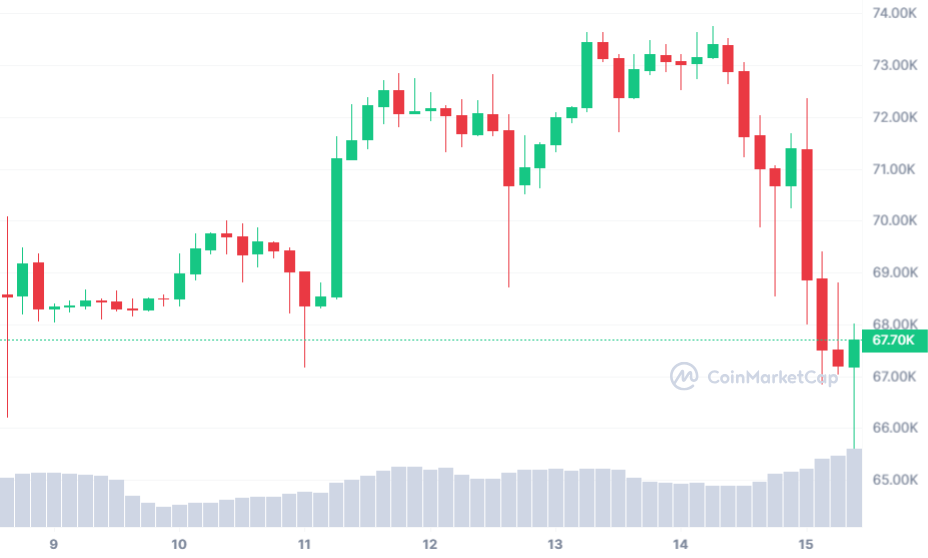Bitcoin continued its descent from its recent peak amid a growing debate on whether the surge in cryptocurrencies reflects speculative excess in global markets.

The premier digital asset tumbled by as much as 7.2% on Friday, before recovering slightly to trade at $67,725 by 7:57 a.m. in New York, following a record high of nearly $73,798 the day before.
The rally in Bitcoin this year, along with the performance of the top 100 tokens including Ether, BNB, and Solana, has eased to below 60%.
The recent uptrend in global stocks, bonds, and cryptocurrencies, fueled by expectations of looser Federal Reserve monetary policies, is facing scrutiny as evidence of persistent inflationary pressures in the US emerges.

In a Bloomberg Television interview, Bank of America Corp.’s Chief Investment Strategist Michael Hartnett suggested that markets are displaying bubble-like characteristics, citing the surge in technology stocks and crypto to all-time highs.
This perspective fuels an ongoing debate on Wall Street regarding the vulnerability of various markets to a potential downturn. Bitcoin proponents highlight approximately $12 billion in net inflows into dedicated US exchange-traded funds since their introduction on Jan. 11, along with an upcoming reduction in the token’s supply growth, as fundamental supports.
However, Sylvia To, head of token partnerships and research at crypto exchange Bullish, noted a slowdown in net ETF inflows to around $133 million on Thursday, suggesting possible buyer exhaustion triggering the Bitcoin sell-off.
Concerns escalated with a report revealing a sharp increase in US producer prices, signaling that the Fed’s efforts to tame inflation may be far from over.
The decline in Bitcoin coincided with signs of cautiousness in the derivatives market, which has been a focal point for bullish sentiment lately. Coinglass data indicate that around $668 million worth of bullish crypto bets were liquidated in the past 24 hours — the highest in about two weeks. Additionally, the funding rate for Bitcoin perpetual futures contracts, popular among speculators, declined, according to CryptoQuant figures.
Analysts observe that selling pressure began to build up towards the end of Asian trading hours on platforms like Binance and Bybit before spreading to other markets, contributing to the market’s volatility.
Despite the turbulence, some see the current market activity as part of the process of consolidating around all-time highs, a common occurrence in the crypto realm.
